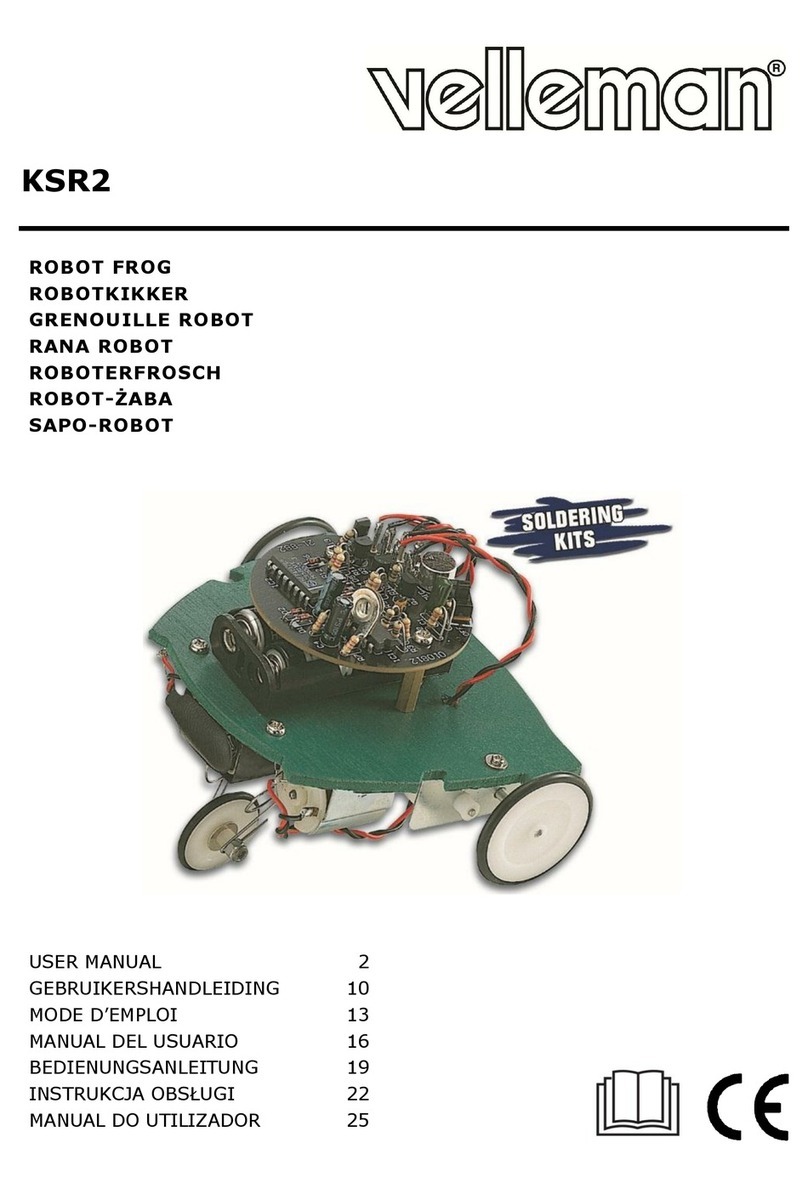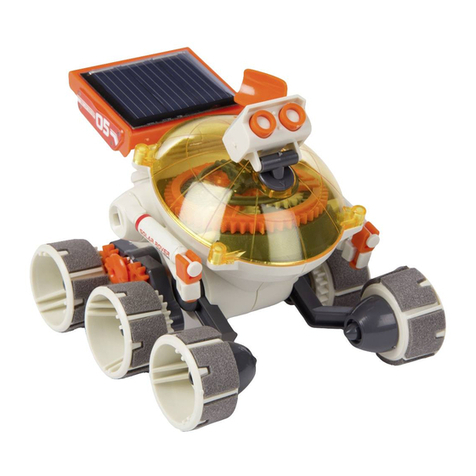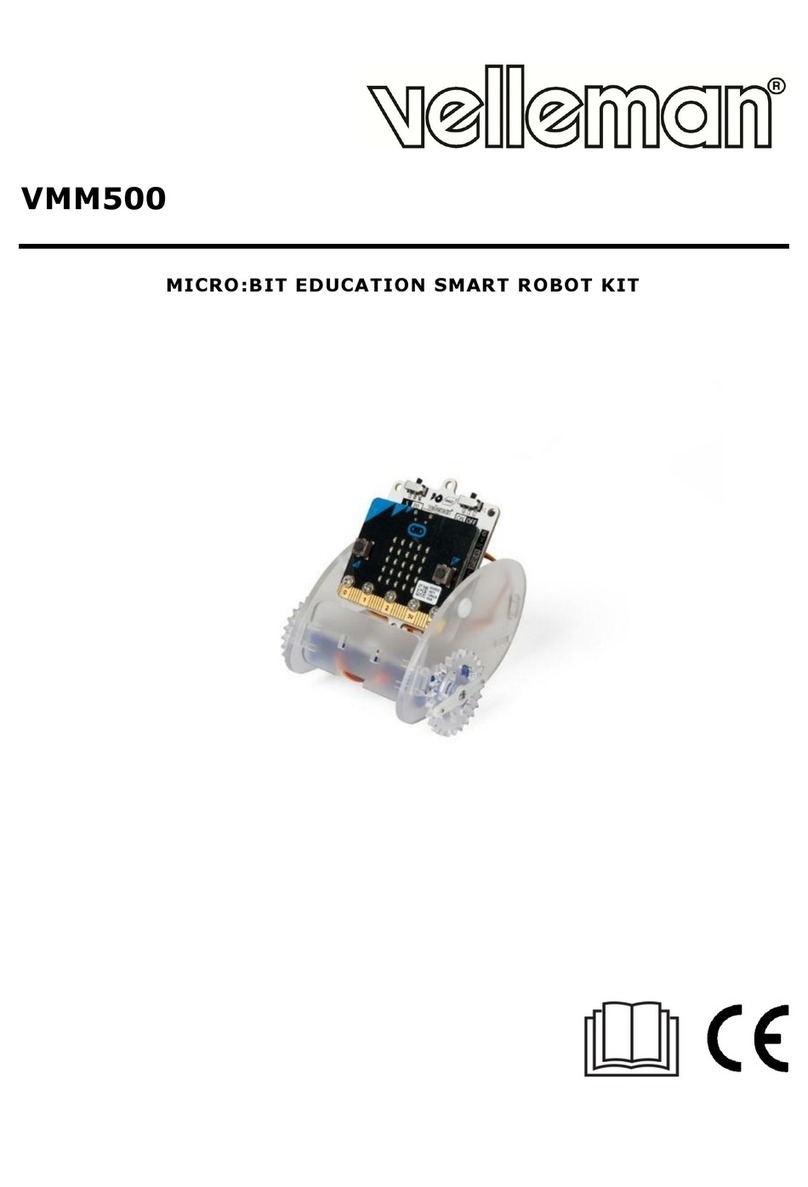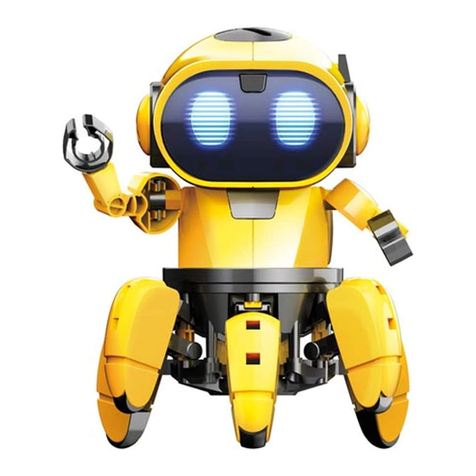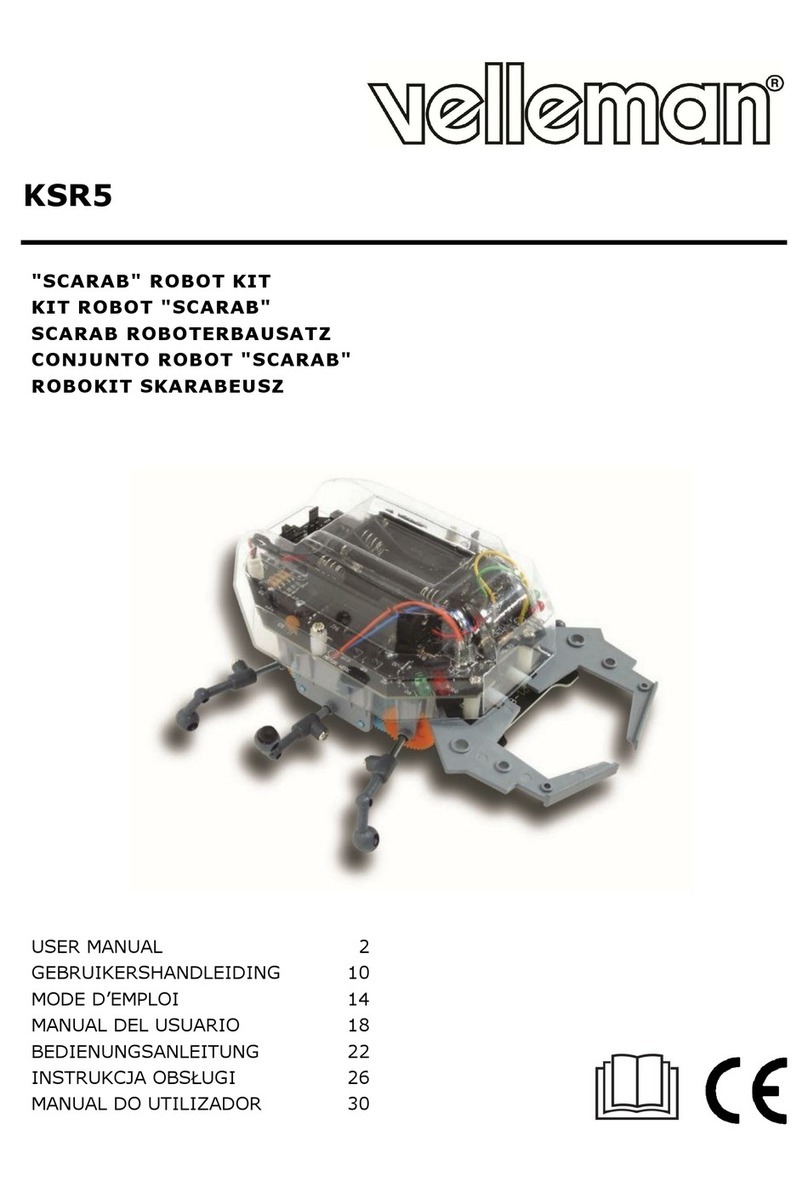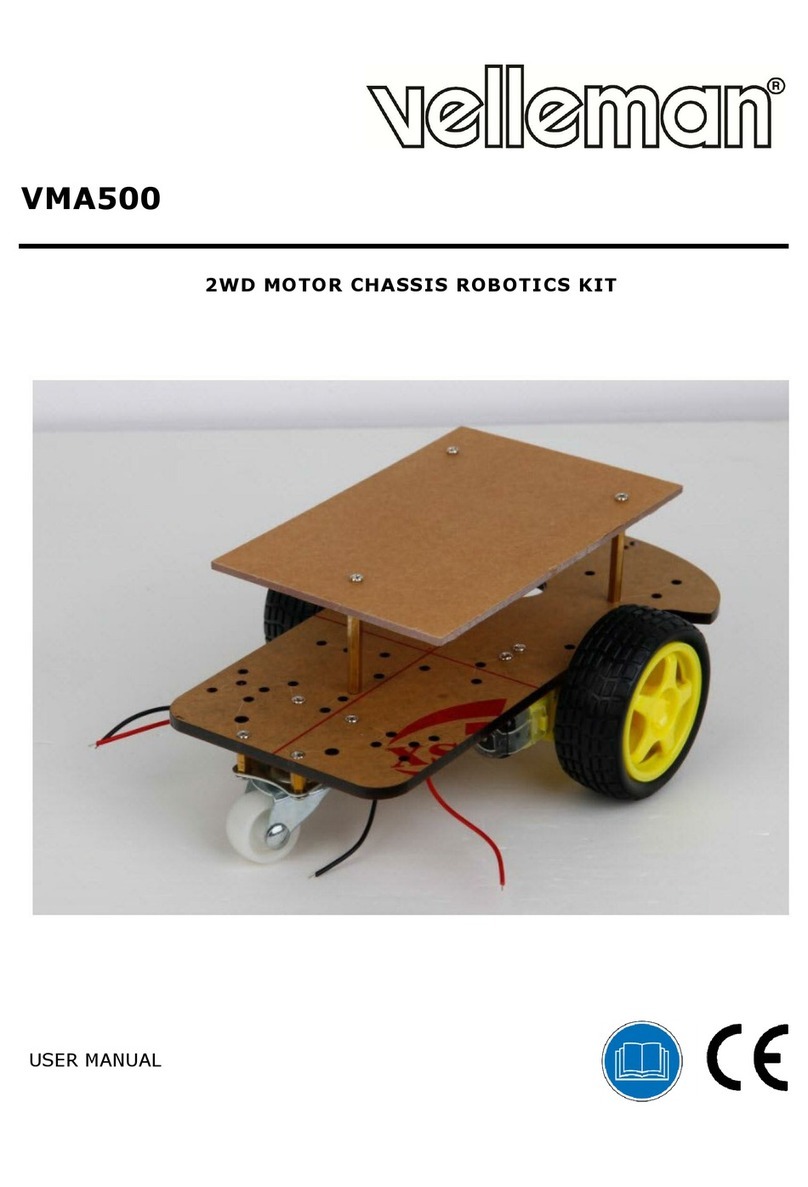
KSR3 VELLEMAN9
KSR3 – HEXAPOD ROBOT
1. Inleiding & Kenmerken
Dank u voor uw aankoop ! Lees deze handleiding aandachtig voor u het toestel in gebruik neemt.
De KSR3 is een zespotige robot die obstakels vermijdt en een IR diode gebruikt als oog. De IR diode zendt een
signaal en wanneer dat signaal een obstakel ontmoet, wordt het teruggekaatst naar een fototransistor. De robot
draait dan naar rechts en zal opnieuw voorwaarts lopen in een rechte lijn zodra de weg vrij is. Twee tandwielmotoren
sturen de bewegingen van de KSR3.
De KSR3 werkt op 1 9V DC batterij (niet meegeleverd) voor de elektronische onderdelen en 2 AA-batterijen van 1.5V
voor de mechanische onderdelen (niet meegeleverd).
Andere benodigdheden : soldeerdraad, een bektang, een soldeerijzer, een zijkniptang, een schroevendraaier en een
soldeerbouthouder met spons.
2. Lijst van elektronische onderdelen (zie fig. 1 blz. 1)
1. weerstand : 2 x 100Ω(bruin/zwart/bruin/goud)
4 x 4.7K (geel/paars/rood/goud)
2 x 10K (bruin/zwart/oranje/goud)
1 x 10Ω(bruin/zwart/zwart/goud)
2 x 15Ω(bruin/groen/zwart/goud)
1 x 1K (bruin/zwart/rood/goud)
4 x 120K (bruin/rood/geel/goud)
1 x 1.8M (bruin/grijs/groen/goud)
2. keramische condensator type 331 (1 x) & type 104 (2 x)
3. elektrolytische condensator 100uf (2 x ) en 4.7uf (1 x)
4. regelbare weerstand (VR) 50K (1 x)
5. IC : 1 x type LM324N
6. schuifschakelaar (1 x)
7. batterijhouder (1 x)
8. IR diode (1 x)
9. PCB (1 x)
10.transistor : 2 x 8050, 2 x 8550, 3 x C945 (C1815), 1 x A733
11.diode IN 4148 (1 x)
12.fototransistor (1 x)
13.Ø1.3mm pin (8 x)
14.connector met draad 12cm : 1 x geel, 1 x blauw, 1 x oranje, 1 x groen
15.batterijclip (1 x)
16.zwart dopje (1 x)
3. Voorgesneden vormen (zie fig. 2 blz. 2)
4. Lijst van mechanische onderdelen (zie fig. 3 blz. 2)
Nr. Hoev. Beschrijving Nr. Hoev. Beschrijving
1 2 tandwielkast 13 24 nylon kraagring (Ø8mm)
2 2 motor DC3V 14 10 schroef (2 x 10mm)
3 2 metalen as (2 x 40mm) 15 10 schroef (3 x 14mm)
